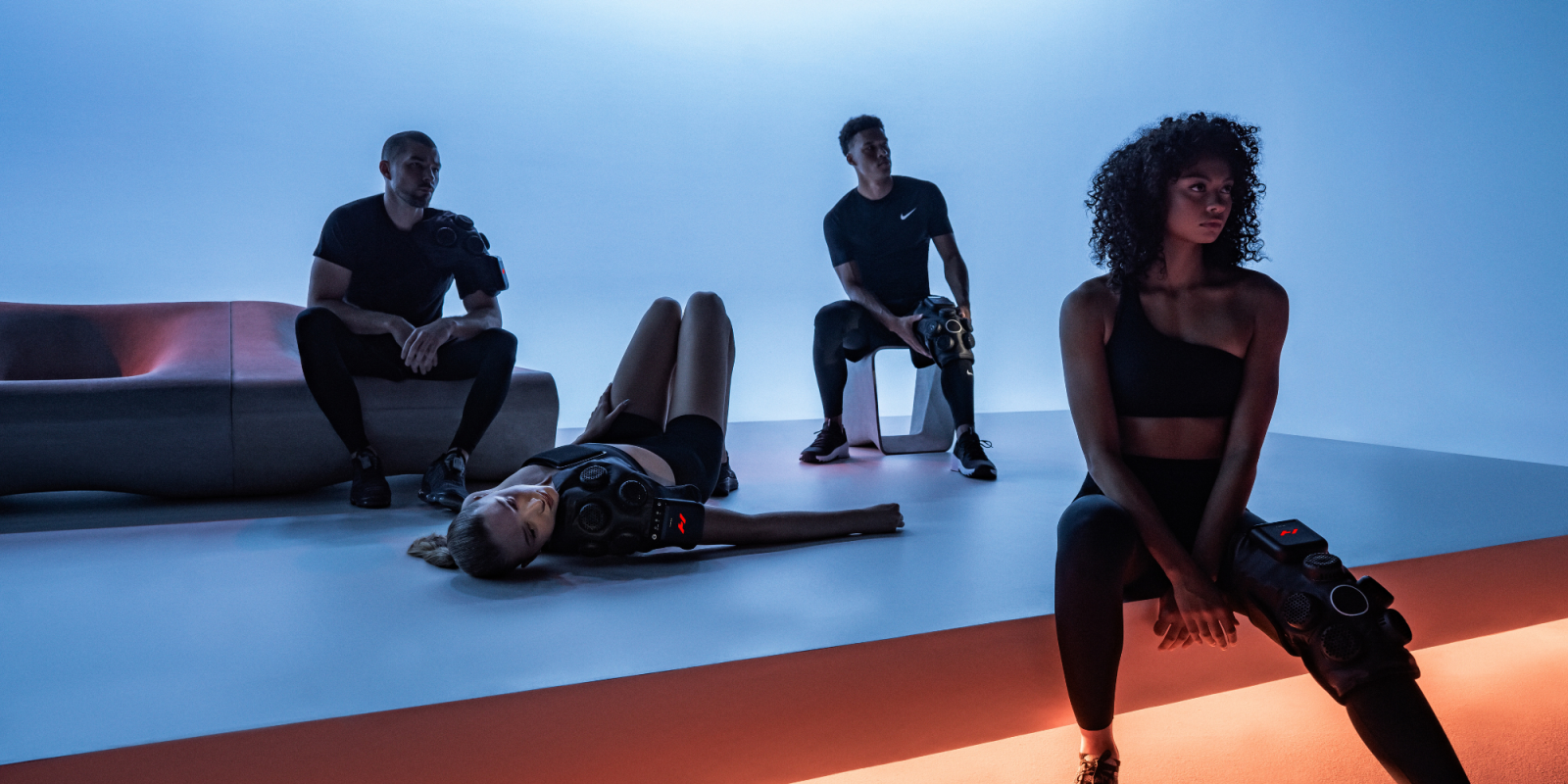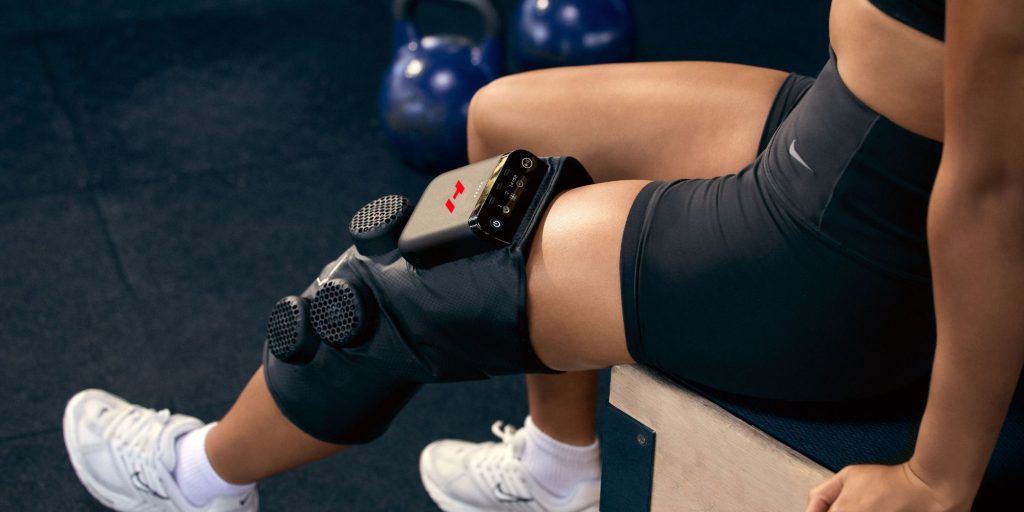
And honestly, it’s about time someone figured this out.
With 25% of Americans dealing with knee pain and over 4 million reporting shoulder issues, the recovery tech market has been flooded with expensive gadgets that promise the world but deliver convenience store ice pack results. Hyperice just dropped the X 2 Knee and Shoulder devices for $449 each, and after looking at the specs, this might be the first contrast therapy device that doesn’t require a permanent setup in your garage.
What changed from their generation one contrast therapy
The original Hyperice X was decent but had some glaring limitations that made it more of a nice-to-have than a must-have. The X 2 addresses most of these pain points with upgrades that matter:
Temperature expansion that makes sense:
- Original range: 45°F to 113°F (7°C to 45°C)
- X 2 range: 40°F to 121°F (4°C to 49°C)
- Five levels each of cooling and heating
The compression addition: This is the biggest upgrade. Five levels of compression up to 160mmHg that push temperatures deeper into tissue. For context, medical-grade compression stockings typically run 20-30mmHg, so this is substantial pressure.
Battery life that doesn’t quit mid-session:
- 1.5 hours continuous use (34% increase over original)
- 1 hour on max cold, 1 hour max contrast, 1.5 hours max heat
- Cord-free with wall plug option for longer sessions
The science behind why this might actually work
Contrast therapy isn’t just wellness industry hype. The research supporting alternating hot and cold treatment is solid, particularly for reducing inflammation and improving circulation. The key mechanisms:
Vasoconstriction and vasodilation cycling: Cold causes blood vessels to constrict, reducing swelling. Heat causes dilation, increasing nutrient delivery. The alternating pattern creates a pumping effect that moves fluid more effectively than either temperature alone.
Pain gate theory application: The compression component activates mechanoreceptors that can block pain signals at the spinal cord level. Combined with temperature therapy, this creates multiple pathways for pain relief.
Lymphatic drainage enhancement: The compression + temperature combination helps move lymphatic fluid, which carries away metabolic waste products that contribute to soreness and delayed recovery.
What I appreciate about the X 2 is that Hyperice actually provides specific temperature and pressure ranges rather than vague “therapeutic levels” marketing speak.
Where this fits in the recovery landscape
The portable contrast therapy market has been messy. You’ve got ice baths that require serious space commitment, compression devices that only do one thing, and heat therapy options that are either too weak or too bulky for practical use.
Hyperice’s strategy here makes sense. They’re positioning this as the bridge between doing nothing and investing in a full recovery setup. The Nike/Olympics connection isn’t just marketing either. Elite-level recovery needs informed the compression integration, which explains why the pressure levels are so much higher than typical consumer devices. At 2.5 pounds and TSA-friendly, the X 2 is positioned for athletes who travel, weekend warriors who want convenience, and people dealing with chronic pain who need consistent access to treatment.
The price point at $449 puts it in premium territory but below professional equipment costs. For comparison, a decent ice bath setup runs $3,000-$8,000, and medical-grade compression devices often exceed $1,000.

My experience with the X 2 Knee
I’ve been testing the X 2 Knee for the past few weeks, using it three times per week: after my heavy leg sessions and on my rest day. Years of competitive figure skating followed by serious weight lifting have left me with knees that demand consistent attention. When you depend on recovery tools to maintain your training intensity, you become pretty ruthless about separating what works from what’s just expensive marketing.
Setup and integration: The device is genuinely easy to incorporate into my routine. Setup takes about 30 seconds, and the OLED display makes switching between modes straightforward without needing to mess with an app every time.
Temperature and compression performance: The cold therapy reaches 40°F as advertised, which is noticeably more intense than the original X. The compression levels make a real difference. I typically use level 3 compression (120mmHg) with level 4 cold (45°F) post-workout, and the combination feels substantially more effective than cold therapy alone.
Battery life in practice: The 1.5-hour battery claim holds up. I usually run 20-minute sessions and can get through multiple uses before needing to charge. The cord-free aspect is genuinely convenient for post-workout use when you don’t want to be tethered to a wall outlet.
Practical considerations: At 2.5 pounds, it’s portable enough to throw in a gym bag. The attachment system holds everything in place securely, and the device itself isn’t uncomfortable to wear. However, mobility becomes significantly limited during treatment sessions. Basic activities like sitting or lying down work fine, but walking around or any knee flexion becomes awkward. This is clearly designed for stationary recovery periods rather than active use.
How it compares: While it doesn’t replace my sauna sessions for overall recovery, it’s become my go-to for targeted knee treatment. The convenience factor makes me more consistent with contrast therapy than when I had to set up ice baths or use bulkier equipment.
Is the X 2 worth the investment?
The compression integration makes physiological sense, and the temperature ranges are legitimately therapeutic. Battery life holds up to real-world use, and the convenience factor beats cobbling together separate devices.
The main consideration is that this requires dedicated recovery time rather than multitasking during treatment. The immobilization factor means you’re committing to stationary sessions, which works well for post-workout recovery but limits flexibility.
The value equation comes down to your specific situation. If you travel frequently, deal with chronic issues, or prioritize convenience, the X 2 delivers on its promises. The device does what it claims to do, and the combination of contrast therapy with compression is genuinely effective.
Whether that justifies the premium pricing depends on how much you value having professional-grade contrast therapy in a portable package.
The bigger picture for recovery tech
This launch signals where the recovery industry is heading: toward devices that actually fit into real life rather than requiring dedicated spaces and complex setups. Hyperice has been smart about iterating based on athlete feedback rather than just adding features for marketing purposes.
The compression integration is particularly interesting because it shows understanding of how different therapeutic modalities work together. Most companies either go all-in on one approach or try to cram every possible feature into one device. Hyperice found a middle ground that makes physiological sense.
Bottom line
The Hyperice X 2 represents genuine innovation in portable recovery tech. The temperature ranges are meaningful, the compression levels are therapeutic, and the convenience factor actually delivers on its promise.
Additional practical details worth noting:
- FSA/HSA approved (important for people managing healthcare costs)
- Works on both left and right sides (eliminates need for separate devices)
- Bluetooth connectivity optional (can use manually without app dependency)
- TSA-friendly at 2.5 pounds for travel
At $449, you’re paying premium pricing, but you’re getting legitimate therapeutic capability in a package that fits in a carry-on. For people who need consistent contrast therapy access and value convenience, this could be worth the investment.
The X 2 Knee and Shoulder are available now at hyperice.com, Best Buy, Dick’s Sporting Goods, and REI. I’ll be interested to see real-world user feedback over the next few months, particularly on durability and long-term effectiveness claims.
Sometimes the best recovery tool is the one you’ll actually use consistently. The X 2 might finally solve that equation for contrast therapy.
Suggested Articles:
- Hyperice X review – the future of contrast therapy
- Experience Active Recovery with Kane Revive AC Shoes
- Kohler Co. expands wellness range with indoor/outdoor saunas
FTC: We use income earning auto affiliate links. More.

